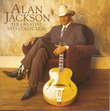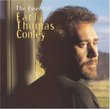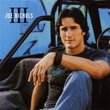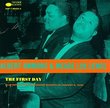| All Artists: Herbie Nichols Title: Complete Blue Note Recordings Members Wishing: 5 Total Copies: 0 Label: Blue Note Records Release Date: 10/21/1997 Album Type: Box set Genres: Jazz, Pop Style: Bebop Number of Discs: 3 SwapaCD Credits: 3 UPC: 724385935220 |
Search - Herbie Nichols :: Complete Blue Note Recordings
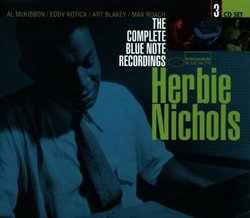 | Herbie Nichols Complete Blue Note Recordings Genres: Jazz, Pop
While this innovative pianist-composer shares a fascination for disjunctive harmonies, complex rhythmic interplay, and oblique vocalized melodies with his better-known contemporary, Thelonious Monk, Herbie Nichols's more e... more » |
Larger Image |
CD DetailsSynopsis
Amazon.com While this innovative pianist-composer shares a fascination for disjunctive harmonies, complex rhythmic interplay, and oblique vocalized melodies with his better-known contemporary, Thelonious Monk, Herbie Nichols's more elongated gait and linear propulsion suggest 20th-century classicism and the polyphony of New Orleans, much as Monk's more jagged phrasing seems to extend on devices originated by icons of the Harlem stride school and the bent-note inflections of rural blues guitarists. These Blue Note sides represent the complete output of five visionary sessions Nichols recorded for producer Alfred Lion in 1955-1956, and reflect the pianist's profoundly drumlike aesthetic in which melodies derive directly from complex root syncopations. Nichols's ability to orchestrate percussive passages on the fly inspires a thrilling level of contrapuntal interplay from drummers Art Blakey and Max Roach that serves to transform his intricate song-forms into edgy, propulsive drum concertos. More significantly, Nichols eschews empty riffing in favor of a deconstructionist approach in which thematic ideas are recast in a spacious, loping, orchestral style that make medium strolls like "Lady Sings the Blues" and minor gallops such as "Riff Primitiff" so darkly romantic and hypnotically swinging, as if Nichols could keep extending and elongating his azure melodic elisions for eternity. --Chip Stern Similarly Requested CDs
|
CD ReviewsCompletely Original Kenneth James Michael MacLean | Ann Arbor, MI USA | 12/26/2001 (5 out of 5 stars) "I love this boxed set of recordings by Herbie Nichols. Nobody out there has ever sounded like him, either before or after his death from leukemia in 1963. That is a tribute in itself. He has a completely original approach to composition and playing the piano that is unduplicatable. I know that others have compared him to Monk, but this is superficial, in my mind. Herbie's tunes all have a classical feeling to them, even when he is playing "out of the box." The notes flow together like a classical piece, but most of his tunes are played with at least 2 or 3 notes out of the scale. Don't get me wrong, all of this music is distinctly recognizable as jazz, and great jazz! It feels to me like the compositions float above the key he is playing in, but at the same time there is a definable melody to each piece. The tunes all swing, many of them are catchy melodies, and I find myself smiling often while listening. It's just amazing! It's very difficult to describe the feel of his stuff, it's like eating an exotic fruit that only exists on one small island in the whole world, then trying to describe the taste. I sense that Herbie knows exactly what he is doing and where he is going with each note. This is music that pushes the envelope, but which at the same time is structured in a way that is pleasing to listen to. In short, it's just genius! I want to emphasize that Herbie's music is not "avant garde" in the sense of being all over the place. These are compositions that are well-thought out, often brilliant, often surprising. Herbie's music generates a mood and a feeling that simply cannot be duplicated by anyone else. I find myself sometimes, while listening, just reveling in his unique tapestries. All 3 CD's are excellent, there is no drop-off from one to the next. There are alternate takes on some of the tunes, but well worth listening to. All of the music on these CD's is jazz trio, with Al McKibbon on bass and Max Roach / Art Blakey on drums, recorded in 1955. They sound great together! This boxed set goes on my list of all-time great sessions in jazz. I can't emphasize enough the uniquely enjoyable quality of Herbie's music. Completely different, yet completely enjoyable. It's as simple as that. If you are a jazz collector, or a serious lover of jazz trio music, this recording is absolutely essential. In a world where "unique" is over-used, I can safely say that this guy is completely his own, never to be copied. An overlooked genius." Belated tribute to an ignored great Tyler Smith | Denver, CO United States | 01/17/2000 (5 out of 5 stars) "The ranks of fine jazz musicians who never received credit for their contributions during their lifetimes are unfortunately large. Herbie Nichols' life offers testimony to the fact that talent doesn't always dictate the course of a career. This wonderful pianist was all but ignored during his life. Fortunately, Blue Note recorded this set of music, which provides all of us the opportunity to hear what was missed the first time around.Nichols' pieces revolve around subtle vamps, unexpected Monk-like angularities and dark, swirling melodies. While the influence of Monk is there, Herbie's music is completely his own, and like Monk, he crafted compositions that are unique, self-contained worlds. He just doesn't repeat himself. The music here is satisfying on each and every listening.For a fine review of and comment on Herbie Nichols' life (and the difficulty of pursuing a life in jazz), pick up A.B. Spellman's book, "Four Lives in the Bebop Business."" Indispensable...a travesty Nichols has gone unnoticed Scott Crawford (sfcra@conn.coll.edu | Phnom Penh | 10/27/1999 (5 out of 5 stars) "Blue Note's recent release of this deluxe set marks a refreshing day for the jazz community. Nichols led a difficult life, compounded pothumoulsy by a relative (almost forceful) lack of recognition of his talents. This is one of my personal favorites, and implore you to purchase it. For a unique interpretation of bop, or to simply enjoy stunning and tasty musical genius, one cannot do without this one."
|

 Track Listings (15) - Disc #1
Track Listings (15) - Disc #1